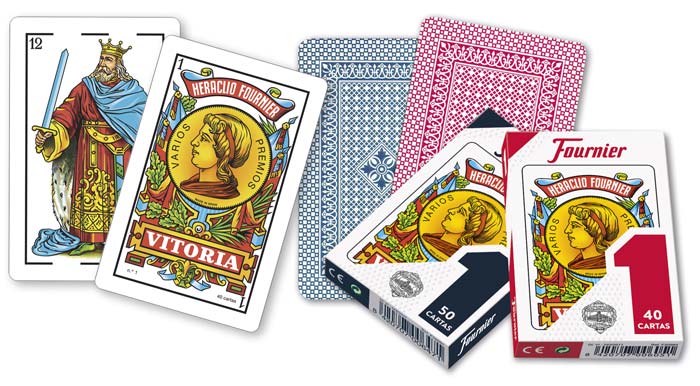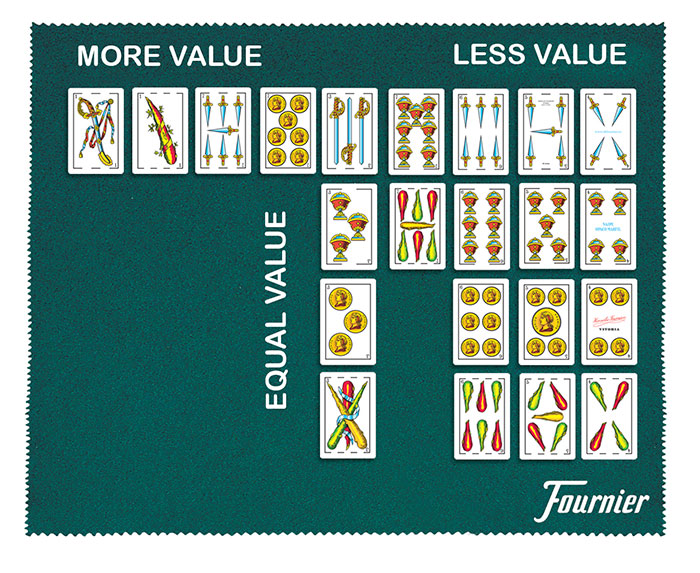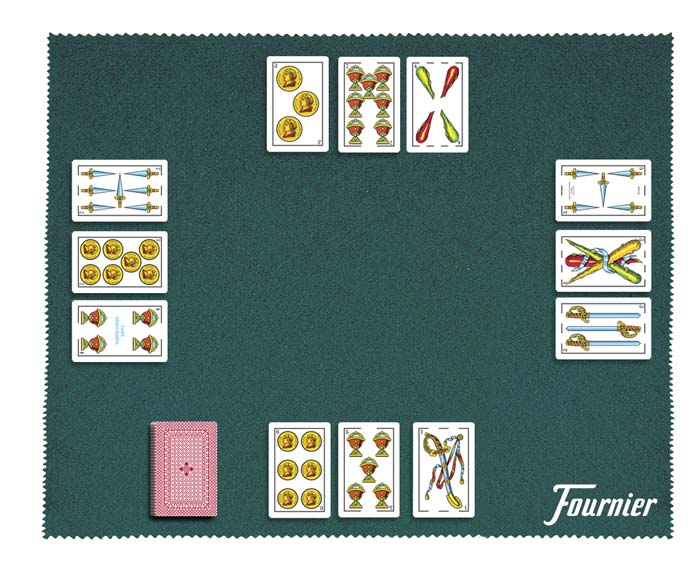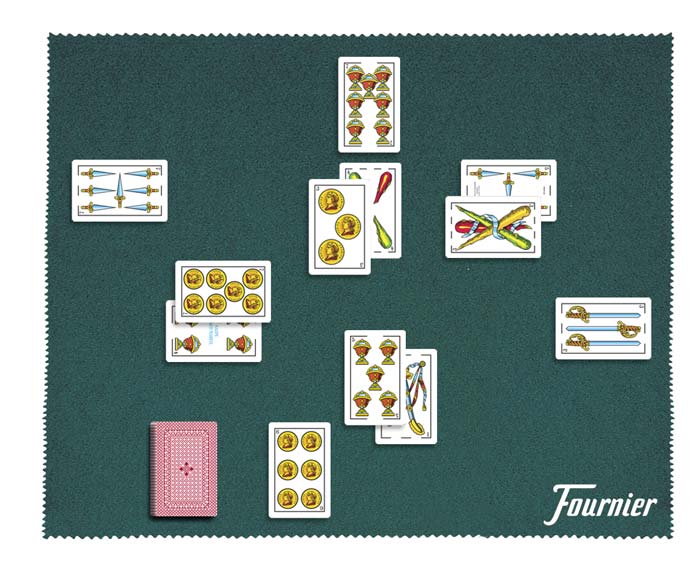Truc is a Spanish card game played mainly in Valencia. There are games from the same broad family, such as Argentinean Truco whose origins would appear to be founded in Truc.
The general aim of Truc is to win two Camas (hands).
Each Cama, in turn, consists of 24 points, which each team should keep adding up during the various hands. The Cama is divided in two parts: the first 12 points are called bad points, and the remaining 12, good points.
It is played with a Spanish deck but only 22 of the 40 cards in the deck are used: the figures, the deuces, the ace of coins and cups are removed.
Truc can be played by two, four, six or eight players (in teams in the last three cases). The most widespread version is between four players, as partners, which is the one explained here.
The 4 players compete against each other in pairs seated around a game table, alternately by pair.
The Truco bet consists of playing for tricks. Given that each player holds three cards, there are three tricks per hand. Each player plays a card during their turn, and the highest card wins that trick, based on the following ranks for the cards:
Start of the game and of each of the hands. In each hand, the deck is cut by the player on the dealer’s left and the dealer gives each player three cards, one at a time, dealt anticlockwise. The player on the dealer’s right is the “hand” (lead).
Gameplay. Start of the game and of each of the hands. In each hand, the deck is cut by the player on the dealer’s left and the dealer gives each player three cards, one at a time, dealt anticlockwise. The player on the dealer’s right is the “hand” (lead).
There are two different types of bet in Truc: Truco and Envido (truc and envit), that can be used to bet on each hand.
Truco is won by the pair who win two of the three tricks.
If the two opponents play a card of equal value, then the trick is a draw (parda).
If both pairs have won one trick apiece and the last trick is a draw, the winner is the pair who won the first trick. In the unlikely case that all three tricks are a draw, the pair who has the hand wins.
In those cases where the third trick is irrelevant, because the hand has already been won, this last trick does not have to be played
(When a pair have already won the first two tricks, or have won the first and had a draw in the second).
The player who wins the trick is the one who starts the next one.
Whoever wins the Truco gets one point toward the total score for the Cama. During the Truco phase any player can bid Truco against their opponents, being a bet to score two points instead of one. If the opponents do not accept the bet, whoever bid gets one point.
Whoever takes the Truco bet can in turn bid Retruco at any time, meaning that, if accepted, the winner of the trick gets three points. If the Retruco is not accepted, those who bid win two points. In turn, and as a last possible reply, whoever accepts the Retruco bid has the option to bid Quatre Val, which means that, if accepted, whoever wins the trick gets 4 points. If not accepted, whoever bid Quatre Val gets 3 points.
The Quatre Val bid can be bettered with the Joc Fora bid, which is a direct bet for the whole Cama.
If at any given moment the player whose turn it is to play a card realises that they have no chance of winning the trick, they have the option to go to the deck. In the two player game this ends the hand immediately, while in the four player game the partner continues to play the hand.
Optionally, any player can bid Envido (envide) during their first turn in the hand, before making or responding to a Truco bet or playing their first card. Once the Envido is open, the Truco bid remains interrupted until the Envido is completely decided.
Envido is a bet on which player has the highest score according to the following rules:
If you are familiar with Argentinean truco, these are the main differences between both games:
If you wish to receive the latest news from Fournier in your email
Sign up!
Are you a distributor, collector, card fan, professional player? At Fournier we have the best exclusive information from within the sector, personalized to suit your interests.
Sign up!


